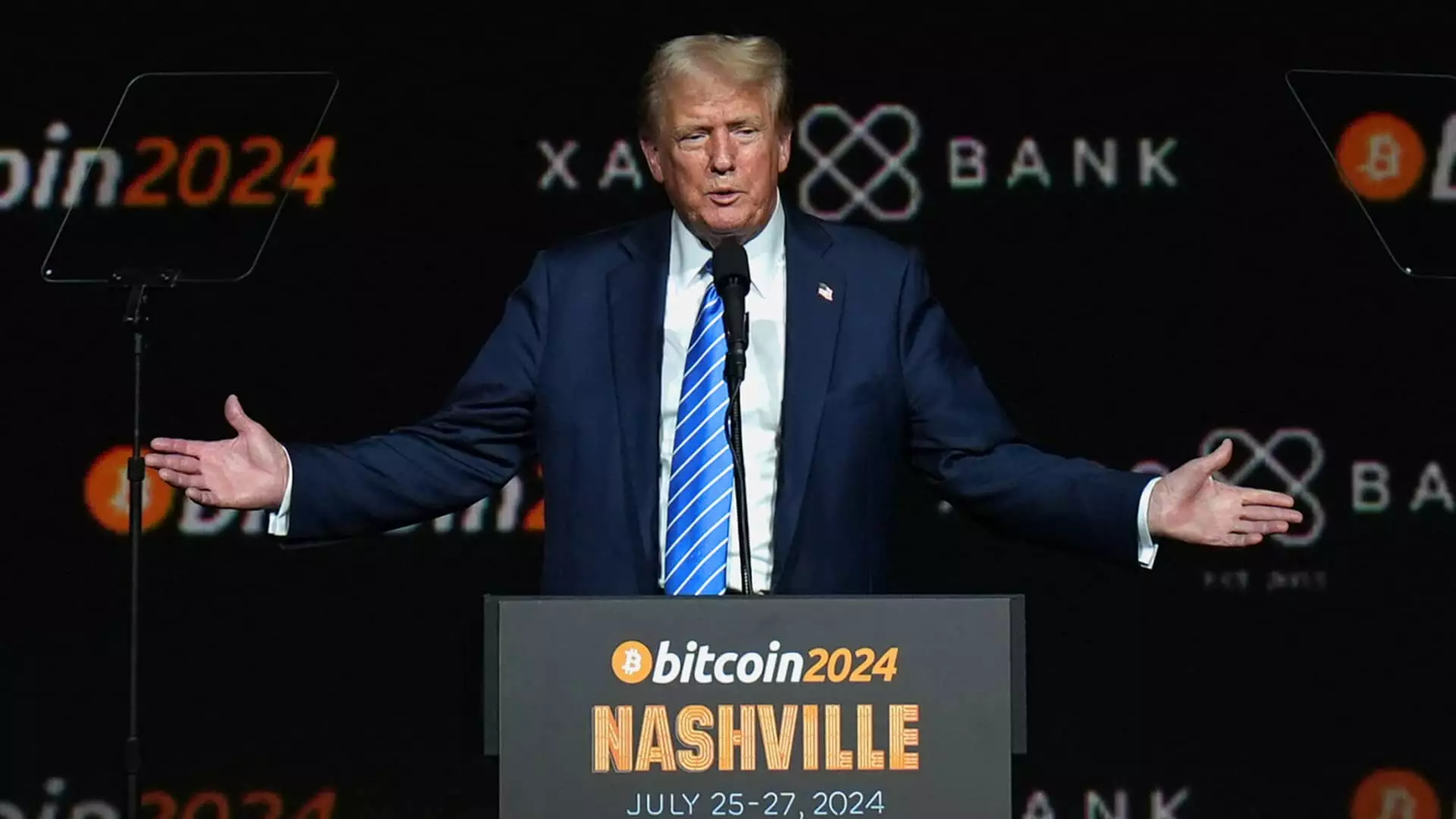Donald Trump’s recent venture into the cryptocurrency landscape, namely through his project World Liberty Financial (WLF), has introduced a wave of intrigue and skepticism in equal measure. In a detailed 13-page document dubbed the “World Liberty Gold Paper,” WLF outlines its foundational mission, potential token allocation, and a monetary framework that points to a favorable financial return for Trump and his family. This initiative has attracted attention not only due to its ties to a prominent political figure but also because it embodies the growing intersection of politics and digital finance.
At the heart of the project lies the proposed allocation of a staggering 22.5 billion “$WLFI” tokens—translating to an estimated $337.5 million for the Trump family, based on specifications at the token launch. As WLF strives to carve a niche—pittorrially donning the title of “The DeFiant Ones”—its token launch could raise $300 million at a $1.5 billion valuation. However, current figures showcase a disconnect with only $12.9 million sold by the product’s estimated launch date.
What raises red flags for many investors is the prospect that Trump’s family could potentially absorb 75% of the project’s net revenues, a substantial proportion that has sparked debate about the ethical boundaries between political influence and financial gain. Simply put, the layout of WLF poses questions regarding the convergence of personal profits and broader public trust. The paper distinctly states that Trump and his family will bear no liabilities, framing their role ostensibly as passive stakeholders rather than active participants in operational decision-making.
The degree of separation between WLF and political campaigns is particularly noteworthy. The released document asserts no affiliation with any political endeavors and emphasizes the project as a retail banking alternative for cryptocurrency. However, the connections remain ambiguous, especially as Trump’s political career unfolds alongside this financial offering.
World Liberty Financial operates under a rather complex financial architecture where three-quarters of net protocol revenues are earmarked for a Delaware entity, DT Marks DEFI LLC, affiliated with Trump. In stark terms, net protocol revenue serves as the lifeblood of WLF, encompassing income from a myriad of sources—spanning platform fees to advertising income—when basic operating expenses are subtracted.
The stark reality of the numbers furthers the discussion. WLF indicates that it will reserve $30 million for operational expenses while splitting the remaining 25% of net revenues with Axiom Management Group, founded by individuals with diverse entrepreneurial backgrounds. Critics question the viability and sustainability of a venture where financial frameworks seem more tailored to enrich a few than to foster inclusive growth.
The proposed token distribution demonstrates an equally convoluted structure. According to the paper, 35% of tokens are allocated for sale to public investors, while 32.5% focuses on community growth and incentives. Surprisingly, only 2.5% of the total token supply is reserved for team members and advisors, raising concerns regarding how the founding team—predominantly inclusive of the Trump family—fits into this distribution strategy. Volatility looms when one considers the stated potential for changes to these distribution amounts.
Investors are left grappling with uncertainty regarding the true ownership dynamics of WLF’s eco-system and the extent to which political affiliations impact the project’s objectives. Given Trump’s proximity to financial markets—paired with the historical context of his administration—any consequent ramifications on investor confidence cannot be overlooked.
World Liberty Financial is a telling example of how cryptocurrency projects can intertwine with political identities, leaving investors at a crossroad of excitement and apprehension. As the dynamics evolve, both supporters and skeptics will undoubtedly monitor the developments of Trump’s foray into blockchain finance, weighing the ramifications not only for participants in the crypto realm but also for the broader fabric of political and economic trustworthiness. The promise of substantial returns for a select few, juxtaposed with an unclear governance model, makes WLF a case study worth scrutinizing as we systematically dissect emerging crypto projects tethered to significant public figures.

